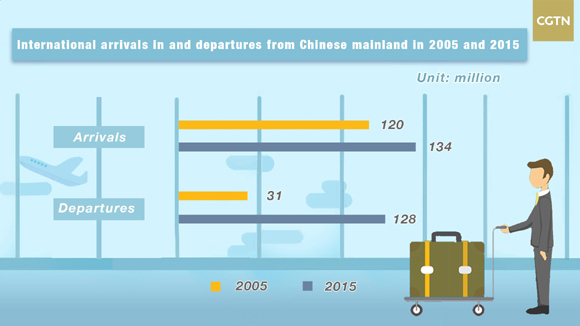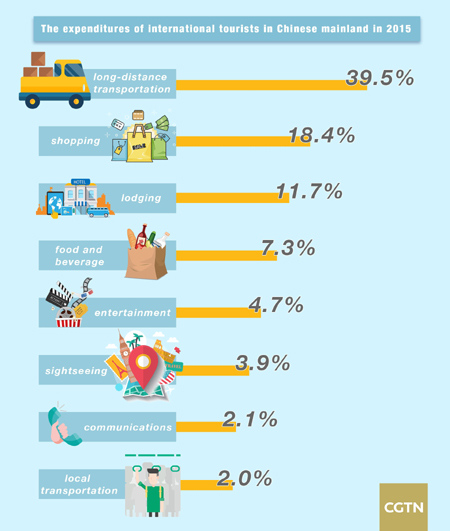Chinese people top the globe in traveling abroad, according to a recently issued report on "Globalization and China's inbound & outbound tourism" jointly published by the Center for China & Globalization (CCG) and China's leading travel services provider Ctrip.
According to the report, outbound Chinese trips reached up to 128 million in 2015, which accounted for more than 10 percent of the global total, making the Chinese mainland the largest source of international tourists.
The massive number and strong consumption power of Chinese tourists exceed any other countries in the world. Chinese tourists spent 261 billion US dollars abroad last year, making up nearly 21 percent of global tourism consumption, according to World Tourism Organization (UNWTO).
Based on statistics from China's Ministry of Commerce, half of Chinese tourists' overseas spending went to shopping and have significantly benefited tourism destination countries, especially Japan, South Korea and Thailand.
According to the Bureau of Exit and Entry Administration of the Ministry of Public Security, as of March 2017, up to 130 countries and regions have signed visa exemption agreements with China. Other incentives include lowering visa application requirement, extending visa validity and reducing visa application fee.
Some countries, including
the US, Canada, Australia, Singapore, South Korea, Israel and
Argentina, even created special visa process procedure for Chinese applicants.
Countries along the Belt and Road are gaining popularity among Chinese tourists because of their proximity, affordability and accessibility.
Compared with the enthusiasm of Chinese people traveling abroad, foreigners showed much less interest in traveling to the Chinese mainland.
While the number of outbound departures from the Chinese mainland swelled up 312.9 percent from 2005 to 2015, the inbound tourists only increased 11.2 percent from 2005 to 2015, far lower than the average 81.3 percent in the Asian-Pacific region and also less than the 38.9 percent for developed countries and 57.2 percent for emerging economies.
Also, Chinese mainland's inbound tourists accounted for 30 percent of the total number of the Asia-Pacific in 2005, but the proportion lowered to 20 percent ten years later.
The consumption of foreign tourists is only one-fifth of Chinese tourists' spending abroad. While Chinese people spend more on shopping, around 40 percent of foreigners' expenditures were used on long-distance transportation.
The report concluded that Chinese tourism industry needs to do more to promote tourism destinations abroad, facilitate foreign visitors' visa application, and enhance China's tourism services to reduce the tourism deficit.


